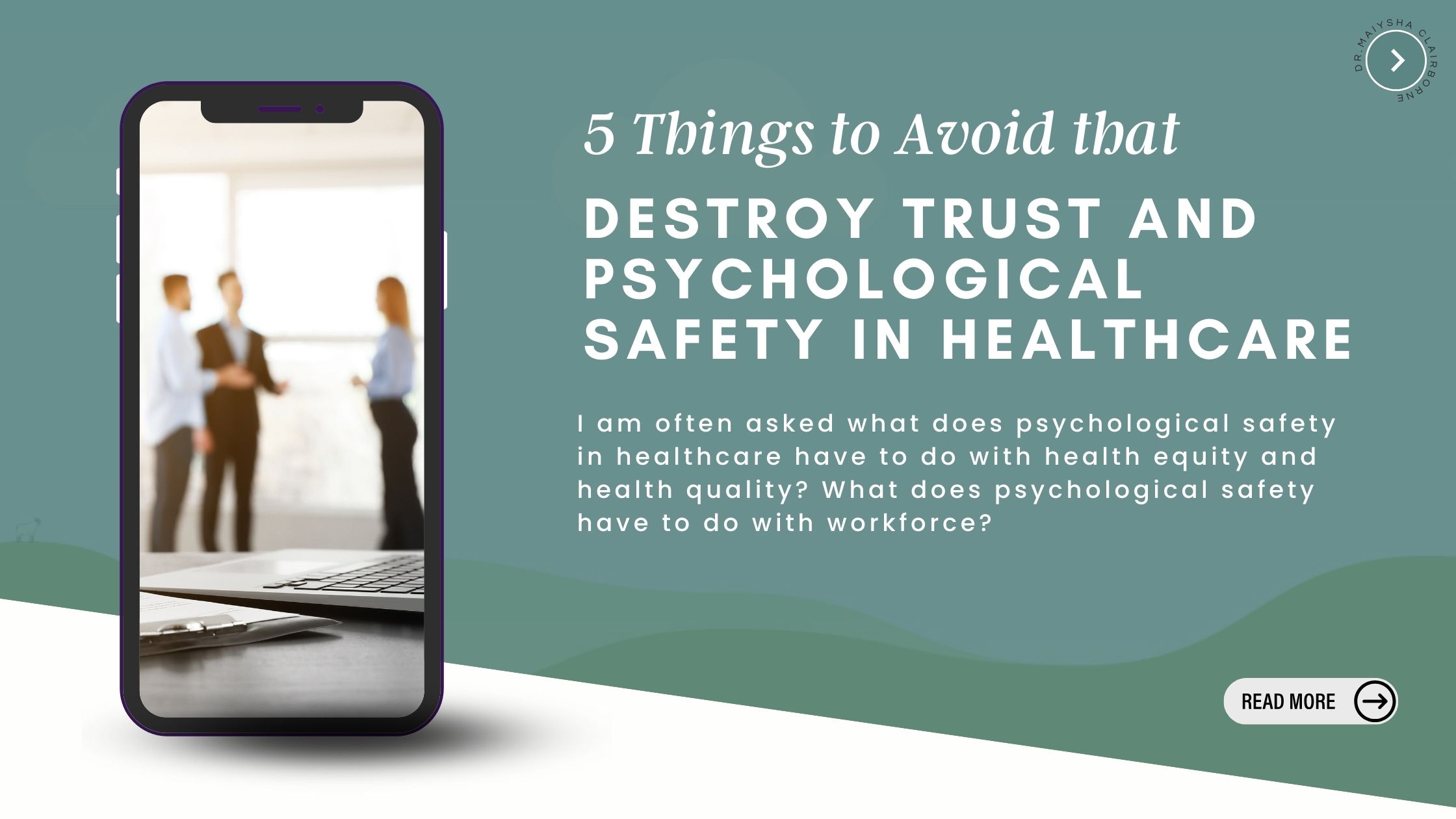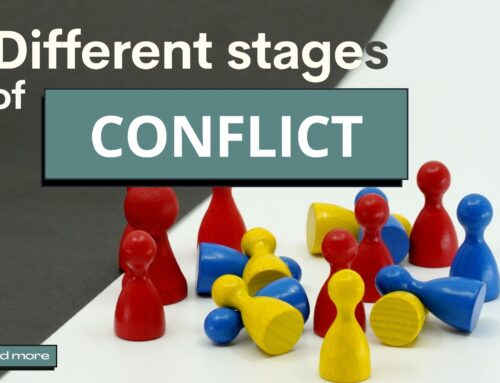
I am often asked what does psychological safety in healthcare have to do with health equity and health quality? What does psychological safety have to do with workforce? In the Surgeon General’s Report on Creating a Thriving and Well Workforce put out in 2022, psychological safety and trust were named as two factors that contribute to burnout and moral injury in physicians and healthcare providers today.
Furthermore, a JAMA study found that 1 in 5 physicians said they plan to leave their place of employment in the next 3 years, and a Mayo Clinic study quoted that “if physicians and nurses carry out their plans to leave medicine over the next 5 years, we will not have enough healthcare providers to meet the needs of patients.” This data underscores a growing urgency. Psychological safety and trust are foundational to creating a workforce that thrives and wants to stay in any organization. Yet despite their importance, these factors are often overlooked.
What Is Psychological Safety?
Psychological safety is defined as an environment where people feel heard, valued, and free to express themselves without fear of negative consequences. Psychological safety is crucial for a healthy and productive work environments and in medicine ultimately affects quality of care.
Timothy Clark’s book, 4 Stages of Psychological Safety, describe 4 elements of psychological safety.
-
Safety to be Included
-
Safety to Learn (and make mistakes)
-
Safety to Contribute
-
Safety to Challenge (or report)
5 Subtle Ways Organizations Destroy Psychological Safety
1. Gossip, Backbiting, and Duplicity
At first glance, water cooler conversations may seem harmless. However, when they involve talking behind people’s backs or excluding others, they become acts of betrayal. As a result, this behavior fractures trust and psychological safety.
Solution: Build intentional connection. Create structured opportunities for employees to bond in meaningful, authentic ways.
2. Lack of Clear Communication
When communication is inconsistent or vague, people feel unsure and unsafe. They lack clarity about what’s expected and struggle to know who to trust.
Solution: Commit to clarity. Transparent, timely, and honest communication sets the tone for safety and accountability.
3. Misalignment Between Words and Actions
Saying “We care about our staff” while dismissing feedback or gaslighting concerns is a fast track to distrust.
“Saying ‘we care about you’ then gaslighting us when we tell you our concerns completely destroys our trust.” – Anonymous Doctor
Solution: Align intentions with behavior. Consistency is key to rebuilding faith in leadership.
4. Lack of Accountability for All
When people consistently avoid accountability, they make others feel targeted or disposable. This breeds resentment and fear, especially in healthcare teams.
Solution: Ensure fairness in accountability. Address favoritism and “clique culture” head-on to restore equity and safety.
5. Disrespecting Boundaries
Crossing personal or professional boundaries, whether through overwork, unsolicited contact, or ignoring consent, undermines psychological safety at its core.
Solution: Train teams in consent culture. Teach leaders and staff how to set, communicate, and respect boundaries.
When leaders recognize these trust-destructive behaviors, they can actively assess the environment, make necessary adjustments, and restore psychological safety in healthcare organizations—empowering physicians and healthcare workers to show up as their healthiest, most effective selves and provide the high-quality care their patients deserve.
Why This Work Matters
It’s not enough to address burnout with wellness tips and coffee breaks. If we don’t address the psychological safety crisis in healthcare, we’ll continue to lose the very people our systems depend on.
Psychological safety supports:
-
Retention – When staff feel safe and heard, they stay.
-
Engagement – When people feel trusted, they contribute more.
-
Health Equity – A safe environment leads to clearer communication and better care for all patients.
Conclusion: Build Psychological Safety, Build a Healthier System
If your organization wants to attract and retain great talent, elevate quality of care, and avoid the devastating cost of burnout, psychological safety must be a non-negotiable priority.
It starts with listening. With truth. With trust.
When you create a workplace where healthcare providers feel seen, heard, valued, and respected—they stay, thrive, and lead with purpose.
Create Psychological Safety in your organization. When you leave your employees feeling seen, heard, understood, valued, appreciated, and respected they will stay and make your organization their career home. Want to know more? Contact Dr. Clairborne to discuss her offerings and how she can help our leaders increase trust, safety and belonging in your organization. Learn more: https://www.mindremappingacademy.com/corporate-programs











